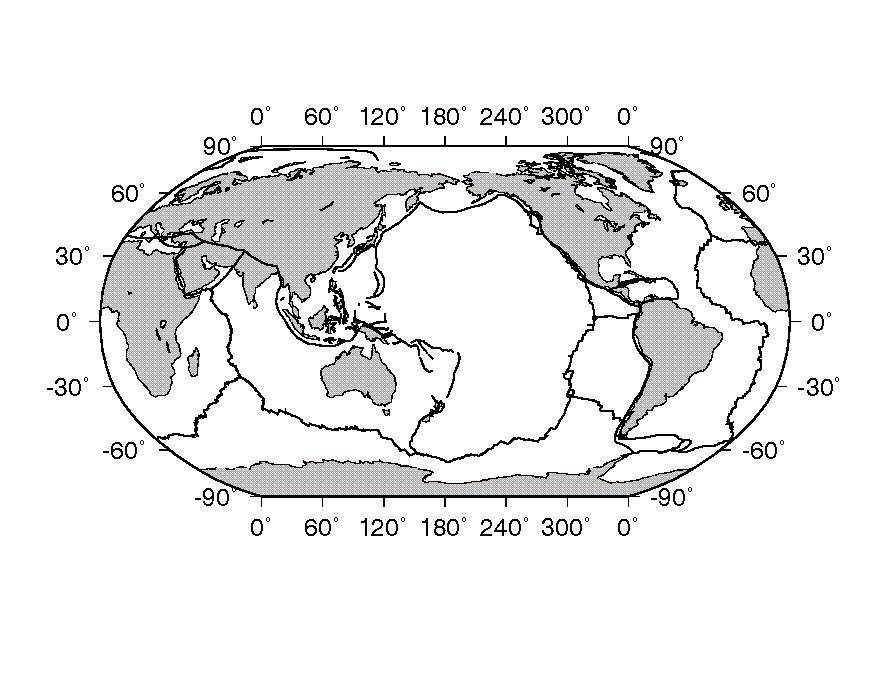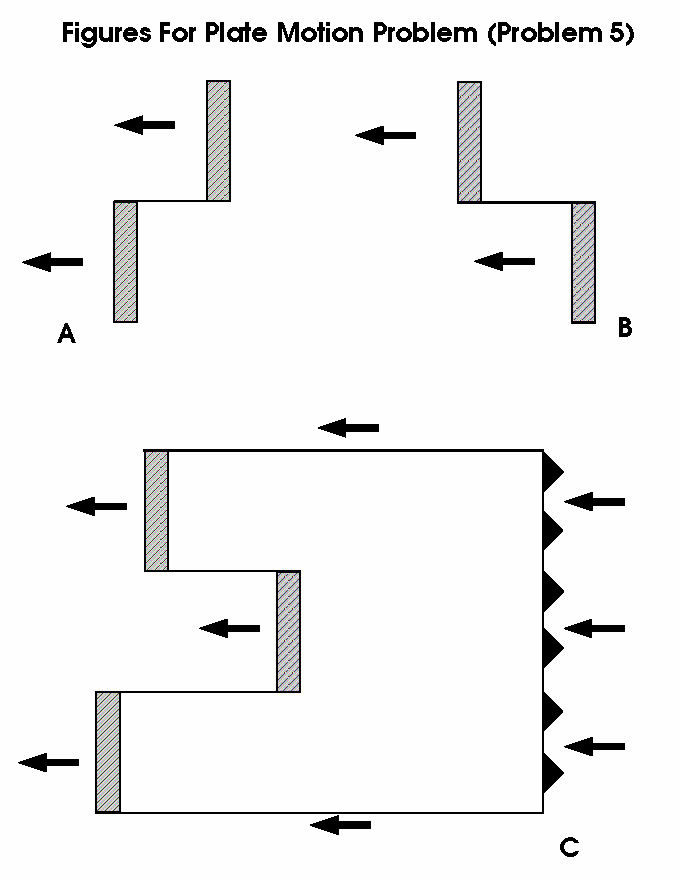
Please write your answers on separate paper from this handout. Please staple your pages together, or at least be sure to sign each page with your name, so that I can grade your homework. If you have problems or questions, please come see me in my office hours or send me an e-mail. My e-mail address is ganderson@ucsd.edu, and my office hours are MW 2:10-3:30 pm in 1539 Galbraith Hall.
Questions 1-3: Short-Answer Questions
Give a sufficiently detailed answer that I know you know what the answer is, but please be concise. Answer in your own words -- if you copy from the book, you won't get credit.
Question 1. Describe at least five types of evidence which support the plate tectonic model.
Question 2. What are the primary sources of energy for the driving force for plate tectonics?
Question 3. What are some possible driving forces for plate tectonics?
Question 4: Plate Identification
On the map of the world below, label the following items. In the case of a plate boundary, indicate which type of plate boundary it is. Use "D" for divergent, "C" for convergent, and "T" for transform, and you may indicate it on the map or a separate piece of paper.

Question 5: Plate Motions on a Flat Surface
In this problem, you are going to draw arrows to represent plate motion across transform faults, spreading centers, and subduction zones. You will need to look at Handout 2 in order to understand the symbols I use; that handout also has a few examples to try to help clarify things.
On the figure below, entitled ``Figures for Plate Motion Problem (Problem 5)'', there are three plate models. I have indicated spreading centers, subduction zones, and transform faults just as in the examples in Handout 2. I have also indicated the motion of one of the plates in the heavy arrows.
I want you to indicate all the relevant plate motions I have not indicated. This may mean spreading or subduction zones. It also may mean you must indicate relative motion across transform faults.
Indicate plate motions by drawing the appropriate arrows on the figure below.

Greg Anderson